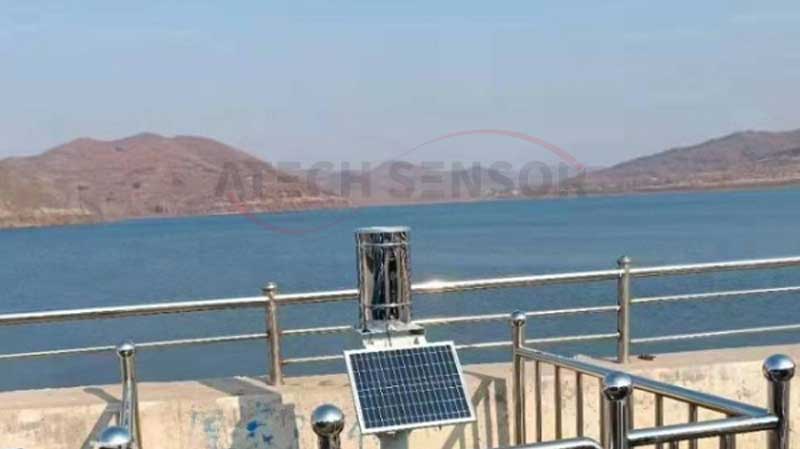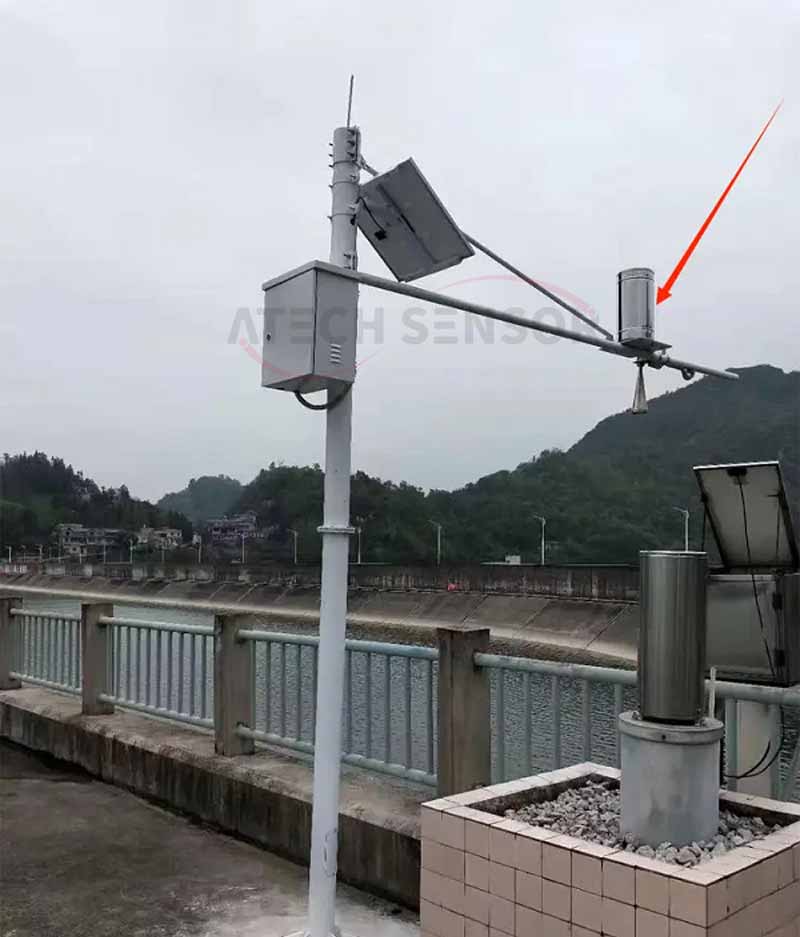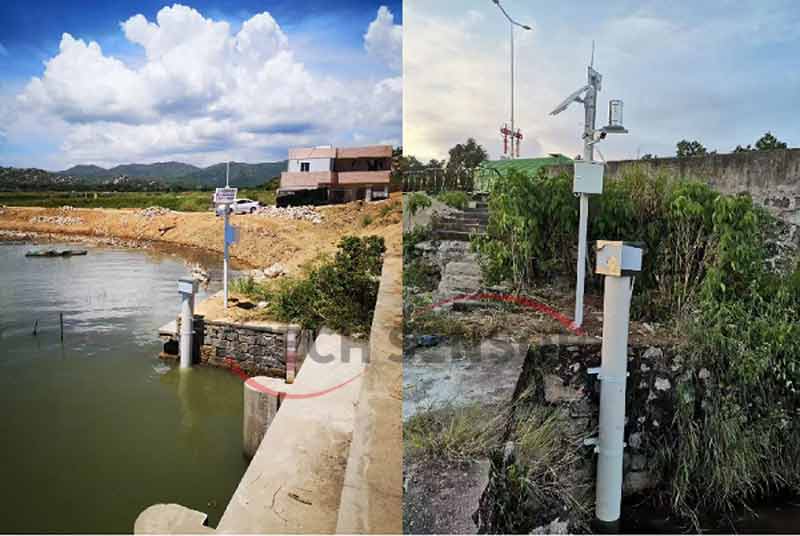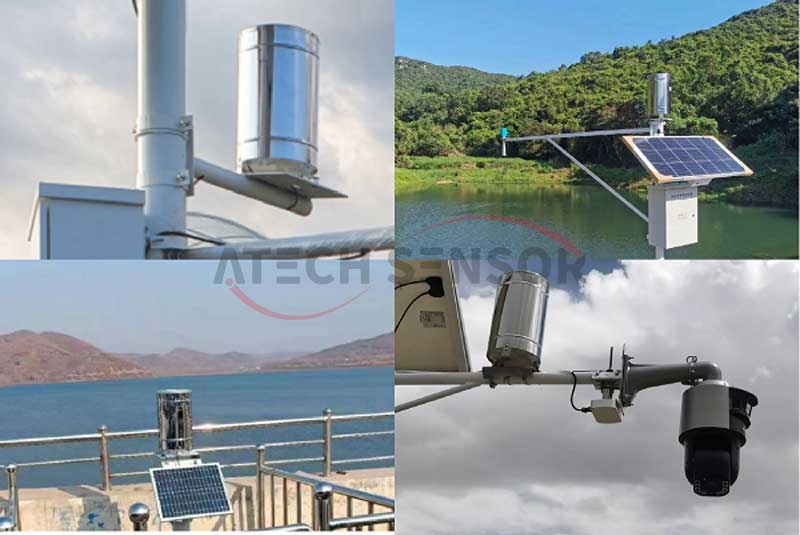In meteorological monitoring, precipitation measurement is crucial, as it is related to agriculture, water conservancy, disaster prevention and other fields. Traditional measurement methods have shortcomings in accuracy and efficiency, and it is difficult to meet the needs of modern meteorological work. The emergence of meteorological tipping bucket rainfall detection sensors has brought new opportunities for accurately measuring precipitation and improving meteorological monitoring efficiency.

1. Working principle of the tipping bucket rain sensor
The core of the tipping bucket rain sensor is a tipping bucket structure composed of two small containers. When the rainwater enters the container and accumulates to a certain amount, the center of gravity changes, causing the container to tilt and pour out the rainwater and trigger the next flip. Each time it flips, the sensor records the event and calculates the precipitation based on the fixed capacity of the tipping bucket (such as 0.2 mm). By continuously counting the number of tipping bucket flips, the total precipitation can be accurately calculated.

2. Features and advantages of tipping bucket rain sensor
1)High accuracy
The tipping bucket rain sensor provides very accurate precipitation data, especially in the measurement of light rain and drizzle. Each flip of the tipping bucket represents a fixed amount of precipitation, ensuring high accuracy of the measurement.
2) Simple structure and easy maintenance
The tipping bucket rain sensor has a simple structure, mainly consisting of several parts such as the tipping bucket, support structure and sensor, without involving complex mechanical parts. Due to its simple design, low failure rate, and easy repair and maintenance.
3) Low cost and high cost performance
The manufacturing cost of the tipping bucket rain sensor is relatively low, and the production process is simple, so it has a high cost performance. It is suitable for large-scale deployment, especially for areas that require a large amount of rainfall monitoring.
4) High reliability
The working principle of the tipping bucket rain sensor is very stable, does not require complex batteries or transmission systems, and has no vulnerable parts, so it is highly reliable. Even in severe weather conditions, the sensor can continue to work stably.
5)Strong adaptability
Tipping bucket rain sensors can be used in various climatic conditions and can withstand extreme environments such as high temperature, low temperature, humidity changes and strong winds. Many types of sensors are also waterproof and dustproof to ensure long-term stable operation in rain, wind and sand.
6)Real-time data monitoring and remote transmission
Tipping bucket rain sensors can be connected to the monitoring platform and upload rainfall data in real time through wireless communication (such as GPRS, LoRa, Wi-Fi, etc.) or wired communication (such as RS485), which is convenient for remote monitoring and data analysis.
7)Low energy consumption design
Many tipping bucket rain sensors adopt low power consumption design and can even be powered by solar energy. This allows them to operate normally in remote areas or areas without access to electricity.

3. Main application areas of tipping bucket rain sensors
1) Meteorological monitoring
The tipping bucket rain gauge is an indispensable precipitation measurement tool in the meteorological station. It can record the intensity, duration and total amount of precipitation in real time, providing key data for weather forecasting, weather analysis and climate research.
2) Water conservancy management and flood warning
The water conservancy department monitors precipitation through the tipping bucket rain gauge, evaluates the water level changes of rivers and lakes, formulates scientific water resource scheduling plans, and prevents the occurrence of natural disasters such as floods.
3) Agricultural irrigation
In the agricultural field, the tipping bucket rain gauge is used to monitor precipitation and help farmers accurately determine whether irrigation is needed. Combining precipitation data and soil moisture can achieve more accurate and water-saving irrigation management.
4) Urban drainage system
In the urban drainage system, the tipping bucket rain gauge can monitor precipitation in real time and judge the load of the drainage system based on the data. This is of great significance to reducing urban waterlogging and ensuring the normal operation of urban drainage facilities.
5) Environmental monitoring
Tipping bucket rain gauges are also used in environmental monitoring, such as assessing the impact of precipitation on soil, vegetation or water bodies, and helping decision makers understand the role of precipitation on the ecosystem.

The meteorological tipping bucket rainfall detection sensor is a powerful assistant for modern meteorological monitoring. It provides reliable data for meteorological work with accurate measurement and efficient operation. With the development of science and technology, it will continue to evolve and integrate with other technologies to improve the meteorological monitoring system, helping us better respond to climate change and prevent disasters, and shine more brightly in the field of meteorology.

